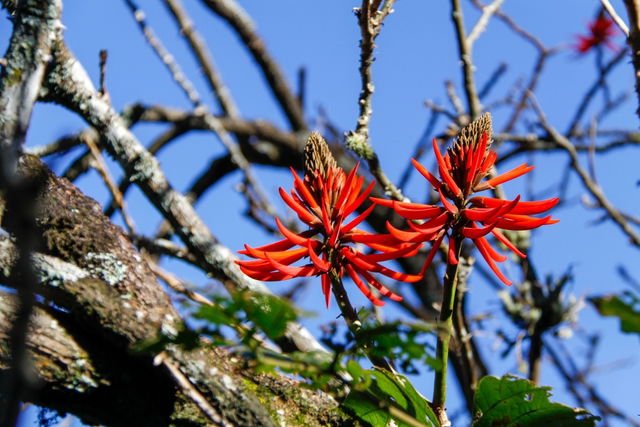Mulungu is a plant that contains calming and sedative properties. It is normally indicated for the treatment of insomnia, stress and anxiety.
Scientifically referred to as Erythrina mulungu, it contains analgesic action that can be beneficial for reliving rheumatic pain and menstrual cramps. .
Mulungu is generally consumed as a tea, can be prepared with the peel or dried leaves. Mulungu can be also be found in capsule or tincture form.

Common uses
Mulungo is normally used for:
1. Treating stress and anxiety
Mulungu contains great amounts of hypaphorine, erythrine and erythravine. These compounds contain anxiolytic action that activate GABA receptors. GABA is a neurotransmitter that relaxes the nervous system and can help to treat anxiety and stress.
2. Relieving menstrual cramps
Mulungu contains analgesic and anti-nociceptic properties that can decrease pain and relieve menstrual cramps. Learn more about natural remedies for menstrual cramps that you can use to relieve discomofrt.
3. Regulating blood pressure
Hydroxyerythravine and erythravine are alkaloid compounds found in mulungu. These contain hypotensive properties, which help to regulate blood pressure and prevent hypertension.
4. Combating insomnia
Mulungu contains hypaphorine, which has a sedative and calming effect on the central nervous system. Therefore, mulungu can improve sleep quality and combat insomnia. Check-out other tea for sleep that you can prepare at home.
5. Relieving rheumatic pain
Mulungu contains great quantities of erythraline, which is a substance that contains potent anti-inflammatory action. This plant can help to treat rheumatic pain from conditions like gout, arthritis and tendinitis.
How to use
Mulungu is mainly consumed as a tea, which can be prepared with the peel or leaves, either dried or in powder form.
Mulungu can also be found in capsule form, and dosing is generally indicated at about 1 capsule per day. This plant can also be found in tincture form, in which case, the recommended dosing is 20 drops dissolved in 200 ml of water, once per day.
Mulungu is not recommended for pregnant or breastfeeding women. It should only be used for medicinal purposes under the direction of medicinal plant specialist.
How to make mulungu tea
Mulungu tea is usually prepared using the peel, in its natural form or in powder form.
Ingredients:
- 1 teaspoon (4 to 6 g) of mulungu peel
- 1 cup (200 ml of water)
How to prepare:
Pour the water into a pot and add the peel, and boil for 10 minutes. Remove from heat, allow to cool, then strain and drink. You can drink up to 3 cups per day, and should not be used for more than 30 consecutive days.
Mulungu seeds should not be consumed, as they contain toxic substances that can cause negative health effects.
Possible side effects
Side effects of mulungu are rare, although it can cause drowsiness, hypotension and muscular paralysis in some people.
Contraindications for use
Mulungu is not indicated for children and adolescents under 18 years of age. It is also not recommended for pregnant or breastfeeding women, nor for people with cardiac failure or arrhythmia.
People who use antihypertensives or antidepressants should consult their doctor before taking mulungu, as this plant can interfere with medication effects.
